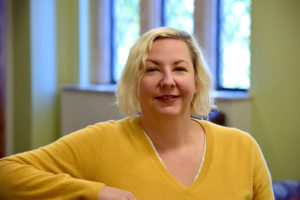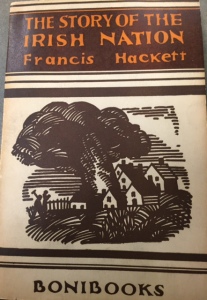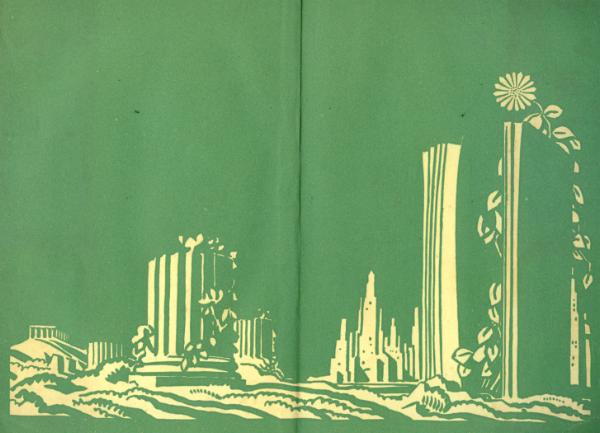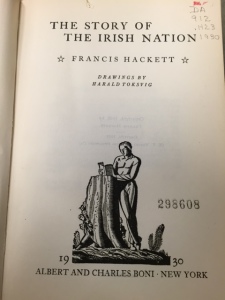Rare Books & Special Collections has acquired a number of new additions this fall, both from generous donors and from purchases, to continue building our rare book and archival collections. Many of these items will be featured in upcoming posts, but we are so excited to have these wonderful items, we thought we’d offer some highlights from our eclectic new additions:
1) The Pennyroyal Caxton Bible (currently on display in the Silent Study Area through mid-December) – This edition of the King James version of the Holy Bible illustrated by Barry Moser, the foremost American master of wood engravings, is the first such illustrated Bible since Gustave Dorè’s edition of the Le Saint Bible in 1865. Volume one contains the five books of Moses, the historical books and the books of poetry. Volume two contains the books of prophecy and the New Testament. Both measure 16 x 11.5 inches and are laid into its own full linen tray case. The beauty of this Bible does not rest on the illustrations alone. It is also a singular typographic achievement and an example of some of the finest printing of our time. The papers were made, some by hand, especially for this project and the exquisitely crafted vellum bindings are a marvel of craftsmanship. (Gift of Bruce and Suzie Kovner).
2) The Library of Julio Santo Domingo: The LSD Archive (currently on display in the Silent Study Area through mid-December) – This two-volume set was privately printed in a limited edition of 500 copies to commemorate the LSD Library, Julio Santo Domingo’s comprehensive collection of rare books, ephemera, manuscripts, art, and other materials focused on altered states of consciousness and related subjects. This 900-page set, finely bound and housed in handmade boxes, is lavishly illustrated with items chosen from the collection, representing literature and graphic arts on topics such as the occult, youth culture, rock music, and drug culture. (Gift of the family of Julio Santo Domingo).
3) New photographic materials include a handheld stereoscope with 14 St. Louis World’s Fair stereo cards and 21 stereoviews of destinations such as Jerusalem, Cairo, Italian catacombs, Kyoto, Tokyo, and the Swiss Alps. Also added were 2 cased ambrotypes of a bookbinder/author and his book.
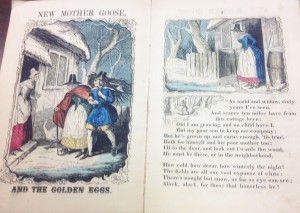
Opening pages of our new Mother Goose book
4) Historic children’s literature additions include 5 early American titles dating between 1820 and 1850: Grandpapa Pease’s New Mother Goose (ca. 1848) contains beautiful hand-colored illustrations. The Little Esop (1845) measures just 3 3/16” x 2 ¾” and is a miniature book bound in purple cloth with gold gilded edges. Other titles include Henry and his Garden (ca. 1830), Rhymes by our Good Old Nurse (ca. 1835), and History of Beasts (ca. 1848). We are also anxiously awaiting a new gift, a 3-volume set of miniature children’s books (2×2”) published in London in 1742-1743, which should arrive in early December.
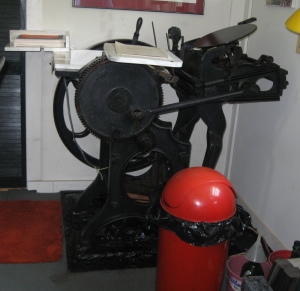
Our 1906 C&P Platen Press
5) Book Arts materials: As we work on creating our Book Arts studio, donors continue to delight us with special gifts. This fall we were privileged to receive a 1906 Chandler & Price Platen Printing Press along with letterpress printing type in 108 fonts, the corresponding type cases and cabinetry, type forms, engravings and cuts, along with tools and other equipment. In a separate donation, we also received an extensive set of tools, projects, and related materials to help us begin supplying our studio.
6) Cutters: There is nothing I hate more than Myself, a limited edition artists’ book exploring words, photographs, and art about the practice of self-harm (gift of the author).
7) University scrapbooks: In the past few months, we have received several scrapbooks documenting Westhampton and Richmond College and the lives of alums, including students who attended in the early 1900s, the 1940s and the 1950s. Along with the scrapbooks, we’ve also received some letter sweaters and even a UR boater hat!
The generosity of our donors continues to amaze us with each new addition. Our collections are certainly strengthened through their kindness. We hope that if you are around campus, you’ll drop by Rare Books & Special Collections to explore our materials, new and old!
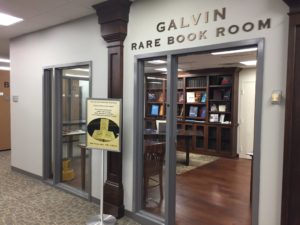 Fall semester 2019 brings some new things to Rare Book & Special Collections. We are trying out different open hours for research this fall as well as having new ways to schedule materials and appointments and to schedule instruction sessions.
Fall semester 2019 brings some new things to Rare Book & Special Collections. We are trying out different open hours for research this fall as well as having new ways to schedule materials and appointments and to schedule instruction sessions.
